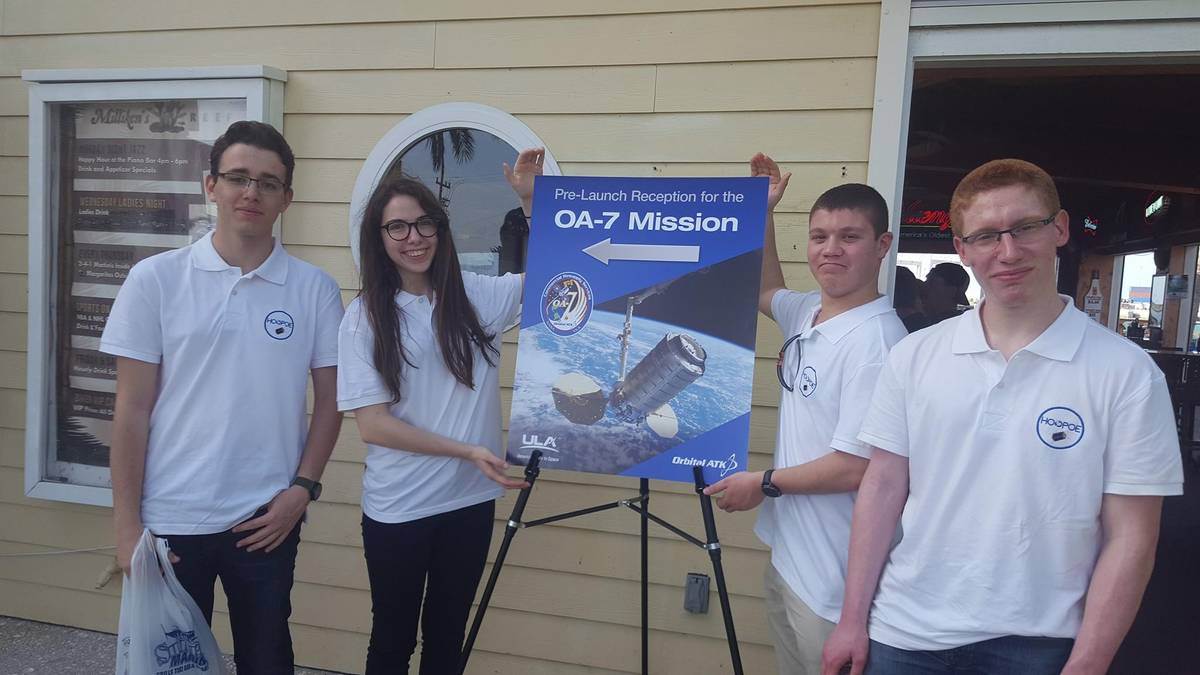Israeli High Schoolers Build Nanosatellite, Watch Its Launch at Kennedy Space Center
Eighty students from around the country created Duchifat-2, a four-pound, motorless satellite that will gather data about the lower thermosphere




Yesterday at Cape Canaveral, it was one small step for teenagers and and one giant leap for teen-kind, as 14 Israeli high school students watched their nanosatellite launch into space.
The gizmo, Duchifat-2 (Hebrew for Hoopoe, Israel’s national bird, apparently), was among 28 nanosatellites built for the European Union’s QB50 thermosphere research program. The best part? Of the 23 countries represented, Duchifat-2’s designers―comprised of about 80 students in grades 9-12 from Herzliya, Ofakim, Yeruham, the Ofra settlement in the West Bank, and Hura, a Bedouin town―were the youngest, reported The Times of Israel: The Israeli effort was the only entry made by high school students.

The small but mighty Duchifat-2, a so-called CubeSat, weighs in at 1.8 kilograms (4 pounds), and measures 20 centimeters by 10 centimeters. Propelled by the earth’s magnetic field, it does not feature motors. Although in 12 months the nanosatellite will sink into the atmosphere and combust, the satellite is tasked in the meantime with gathering data about plasma density in the lower thermosphere.
The project, an endeavor two years in the making, was sponsored by the Science Ministry-run Israel Space Agency and was developed at the Herzliya Science Center, where high schoolers were paired with engineers from the ISA and Israel Aerospace Industries. Duchifat-2 comes on the tail of its predecessor, Duchifat-1, a student-designed radio satellite that assists lost travelers who have no access to cell service. For the curious, the science center’s Facebook page offers behind-the-scenes looks at what goes on in the lab, as well as footage from the launch.
Duchifat-2 and its spiritual sibling satellite, which is expected to remain in orbit for 20 years, are just two examples of Israeli aeronautical ingenuity. In a Tablet article from January, “No Man on the Moon,” Samuel Thorpe explores the innovation unfolding at SpaceIL, Israel’s entrant for the Google Lunar Xprize.
“Duchifat-2 is not only an educational venture that brings space closer to youth and lays the way for tomorrow’s generation, it is also an international research project,” said Science Minister Ofir Akunis in a statement. “This is Israeli pride for the future generation, and an opportunity to increase public awareness about space.”
To infinity and beyond.
Zoe Miller is Tablet’s editorial intern. Follow her on Twitter here.